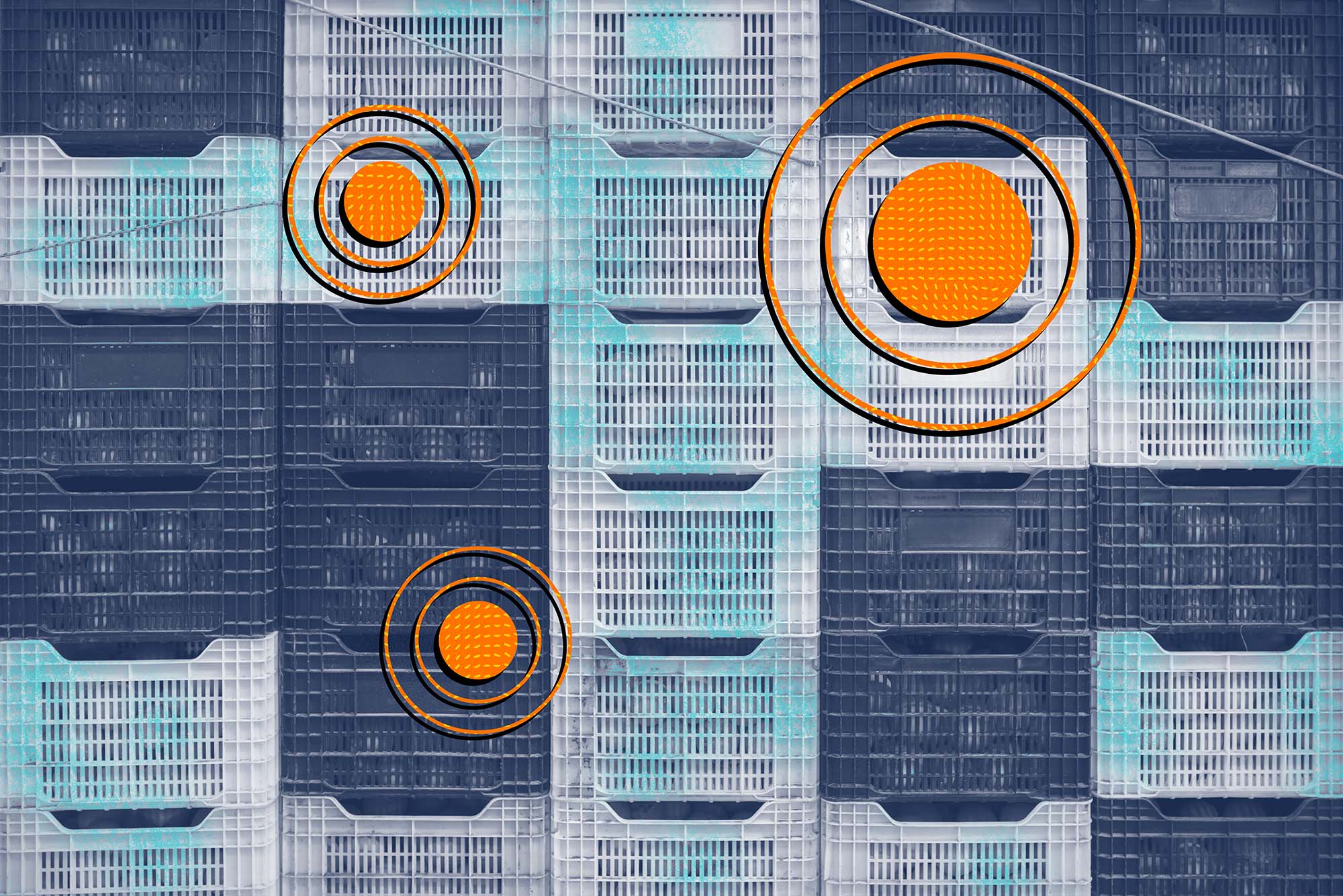Then there is the environmental impact. In 2018, WIRED reported that the pursuit of raw materials was a threat to the planet.
Researchers at the University of Virginia School of Engineering’s Link Lab, where more than 40 faculty members and 200 graduate students combine efforts to develop and deploy cyber-physical systems, are creating sustainable hardware to power sensor networks.
Their work will help make a future trillion-device IoT possible.
This Is the Stuff of Science Fiction
Benton H. Calhoun is a professor in the Charles L. Brown Department of Electrical and Computer Engineering and member of the Link Lab. When he joined UVA Engineering in 2006, he was coming home to the place where he earned a bachelor’s degree in electrical engineering.
Calhoun had been researching ultra-low power circuits at Massachusetts Institute of Technology, where he earned his Ph.D. in electrical engineering. After Calhoun joined UVA Engineering’s faculty, he continued to collaborate on his research with former lab mate David Wentzloff, who also earned a Ph.D. in electrical engineering from MIT and joined the University of Michigan faculty.
In 2012, their research on new approaches to hardware attracted investors and launched a business. The early-stage startup, called PsiKick, introduced the lowest-power wireless sensors in the world. In fact, they were so low power they eliminated batteries altogether and operated entirely from tiny amounts of energy they harvested from the environment.
Less than a decade into his tenure at UVA, Calhoun’s pioneering work had taken center stage in the burgeoning industrial IoT, or IIoT.
Now named Everactive, PsiKick attracted successively larger rounds of investment to become a 90-employee operation delivering self-powering, battery-less sensing systems for companies like Merck, 3M and Morgan Stanley. The sensing systems monitor equipment to detect failures, reduce maintenance costs and provide continuous access to micro-level data for superior operations planning.
The commercial demand for battery-less sensor technology exemplifies just how critical university breakthroughs are outside of the lab. Calhoun, who is now a co-CTO with Wentzloff at Everactive, never stopped looking for new ways to further revolutionize the IoT. Last year he was named an IEEE Fellow for his groundbreaking research in battery-less sensors.
Calhoun’s research group is now developing the next generation of sensors that will be even smaller so they can be deployed anywhere, are cheaper to produce, and can harvest tinier amounts of energy from the environment for a never-ending power supply.
“We are talking about creating a whole new category of ‘thing’ that is wireless, unobtrusive, and continuously senses useful information about the world and communicates it so that it can be used for a useful purpose,” Calhoun said.
“In industrial applications, like manufacturing plants, today’s model is to wait until something fails and then replace it,” Calhoun said. “This new category of technology could enable 15,000 sensors in one site to continuously monitor equipment and parts in a proactive maintenance approach.”
The potential for agricultural efficiency offers a window into the massive benefits these tiny, self-powered sensors offer not only for commerce, but for society.
One industry that would benefit from comprehensive sensing is viticulture.
“Vineyard owners could sense the micro-climate at each vine for specific data to continuously monitor the crops and produce a better yield,” Calhoun said. “Precision data would be available in real-time that cannot be realized with the tools we have today, like general weather reporting.”
There are also huge implications for the agricultural supply chain.
“Imagine being able to monitor the boxes in a large produce shipment,” Calhoun said. “This technology would allow the supplier to detect when one piece of produce in a box starts to go bad, so that a box can be pinpointed with precision and removed to protect the rest of the shipment.”
It is hard to calculate the impact of such radical efficiencies on the future economy. However, the National Resources Defense Council estimates that reducing food losses by just 15% would save enough food to feed more than 25 million Americans every year, so powerhouse sensor networks could become a game-changer for society.
“The evolution would be multiple orders of magnitude in scalability. This number of unobtrusive sensors could translate into almost a sixth-sense awareness all of the time,” Calhoun said. “We are talking about capabilities that are just science fiction today.”
Revolution Happens When You Remove the Wire
Brad Campbell, assistant professor in the Department of Computer Science and the Charles L. Brown Department of Electrical and Computer Engineering, is conducting research in the Link Lab to reinvent hardware for the future IoT. He is specifically interested in making sensor networks that create smarter buildings.
“There are millions of existing buildings, and they consume 76% of all electricity in the U.S. Even though they are the largest energy consumers, we have very little understanding of what buildings are actually doing or where the energy is going,” Campbell said. “Through better sensing, these questions could be answered and help retrofit existing structures to be more energy efficient.”
Campbell, along with Calhoun, is collaborating with UVA Facilities Management on a $2 million strategic investment fund grant to use a battery-less sensor network to monitor steam traps to detect trap failures and make replacements in real time. Industry estimates indicate that one failed steam trap can lose close to 300 pounds of steam per hour.
“In the pre-IoT era, most critical parts are generally checked once per year. So, if one steam trap fails the day after a yearly audit, it won’t be caught again until a year later,” Campbell said. “Adding sensors to monitor the steam traps offers continuous daily reporting that can be used to immediately make repairs.”
Although it is hard to project the future value of such next-generation technologies, the amount of energy from four broken steam traps, if captured, would be sufficient to power up the average home in the United States. The amount of energy that can be saved by preventing just one hour of a steam trap’s malfunction is enough to power a 100-watt lightbulb for 2.8 hours.
Retrofits like the one being piloted at UVA – applied to facilities across the globe – would result in astronomical energy savings. The key to realizing those future gains depends on finding new ways to power the sensors.
“Companies are already using sensors for anything that is critical, but there is no practical way to scale sensors into large-scale, ubiquitous networks. Costs are prohibitive, due to installation complexities of having to run wires to power the sensors,” Campbell said. “The revolution with the sensor networks happens when you can remove the wire.”
Campbell is also designing hardware for the new frontier of sustainability that is referred to as living buildings, which means buildings that interact with their occupants.
“Energy optimization tends to focus on the building itself. By incorporating sensors that can understand the human responses in a building, we can monitor what the occupants are attempting to do,” he said.
A building that can identify exactly what an occupant needs, the moment they need it, uses the least amount of energy. Grocery stores, for example, are applying the concept in responsive freezer cases that light up when they sense a shopper and then go dark when the shopper leaves.
In the future, these types of interactions between the fixtures and occupants will be in every building. The problem that needs to be solved before that can happen is figuring out how to scale the technology.
A smart-lighting system for a single building can include up to 30,000 sensors.
“The size of the task is driving the need for new platforms that allow us to harvest energy in support-sensing on hardware that does not require a battery. We’ve got to reliably power sensors on their own and infinitely,” Campbell said. “When the power problem gets solved, the real promise from IoT can be realized.”












